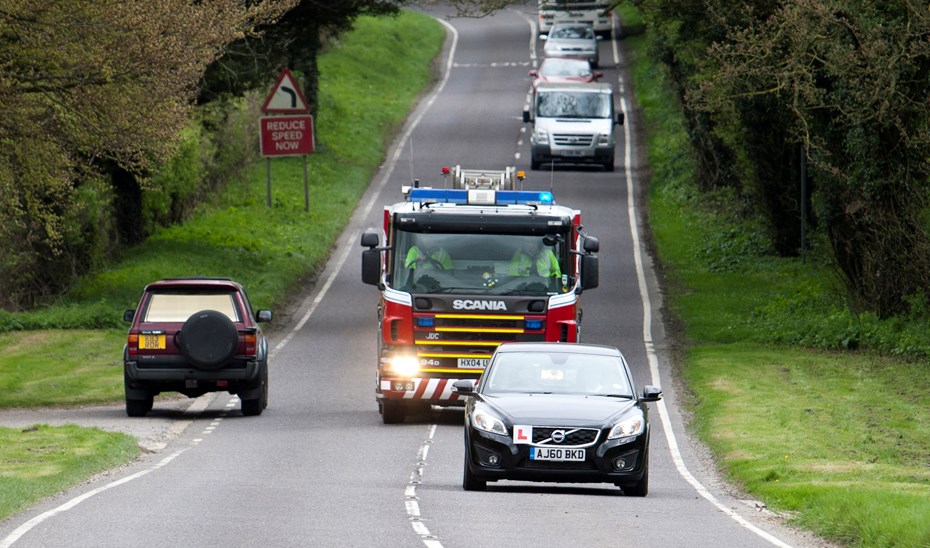Hearing the siren of an emergency vehicle shouldn’t panic drivers, but sometimes that’s exactly what happens, especially if you can’t see where it’s coming from.
In doing so, all sensible driving can go out of the window, causing chaos and potentially receiving a fine in the process if you forget the rules of the road.
Here’s a quick guide to what to do when an emergency vehicle is around you.
Don’t panic
The worst thing you can do when an emergency vehicle approaches is to panic. Remain calm and remember to obey the usual rules of the road.
This way, you can make a measured decision to work out where you need to go that’s safe and sensible, and without causing any danger to other drivers, let alone the emergency vehicle.
Also remember that the drivers of ambulances, police cars and fire engines are all trained – they know what to do and which route to choose through traffic that’s safe and time-effective.
Don’t do anything that could land you a fine
Seeing blue flashing lights can instantly make you want to get out of the way, but remember you’re still on the road, and that a camera cannot recognise that you’re moving out of the way of an emergency vehicle.
With that in mind, don’t pull into a bus lane and continue to drive along. If you then receive a penalty notice for driving in a bus lane, you’re unlikely to be able to successfully appeal against it. If you do find yourself in a bus lane, stop the car. If you’re charged, you may have more of a leg to stand on, but we’d always advise against it in the first place. Find somewhere to pull over that’s safe and legal to do so.
The same applies for driving through a red light. Move out of the way of an emergency vehicle by jumping the lights, and you’ll still pick up a fine like you would if there wasn’t an emergency vehicle to move out the way of. If you find yourself at a set of traffic lights in this situation, the emergency vehicle will more than likely drive on the other side of the road around the lights if it’s possible.
No sudden movements
Slamming your brakes on as soon as you see blue flashing lights can cause an accident in itself, so think sensibly before you do anything like that. The ambulance, police car or fire engine will get around you when it’s safe to do so.
Suddenly swerving out of the way can be dangerous, and if you do anything without indicating is relying on following drivers being able to read your mind.
Common sense
A large amount of what to do in these situations centre around exercising some common sense. You wouldn’t normally mount a pavement when you’re driving, so don’t do it if there’s an emergency vehicle – it can be dangerous for you and, more importantly, pedestrians walking along.
Similarly, don’t pull out of the way or stop somewhere like a blind bend or on the crest of a hill. Emergency vehicles – as well as other cars – won’t know you’re there and it could cause another incident.
Ensure you obey the usual rules of the road – don’t do things that could get you a fine, and remember to be courteous to both the emergency vehicle and other road users. Use your indicators to let them know what you’re doing, and don’t drive erratically.
The most important thing to do is remain calm and think about when and where you can safely move out of the way.
More helpful driving content:





